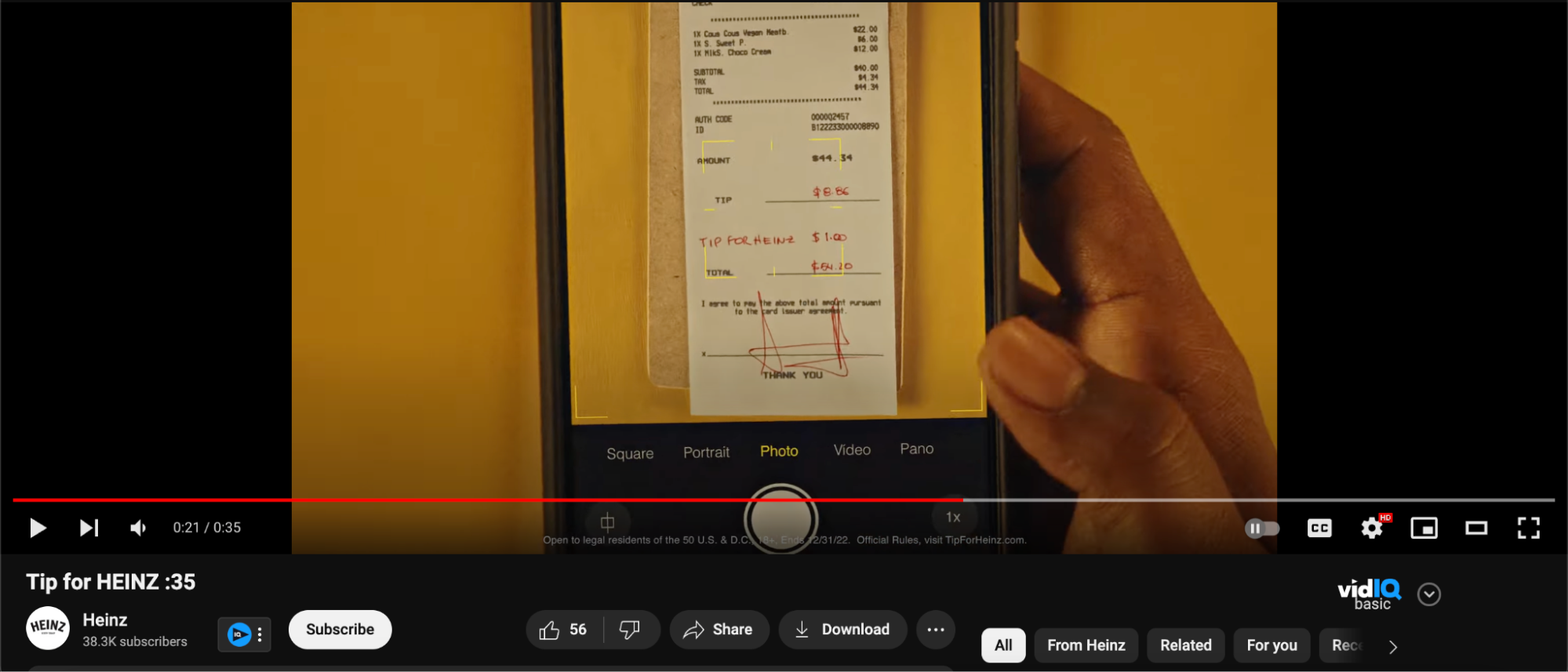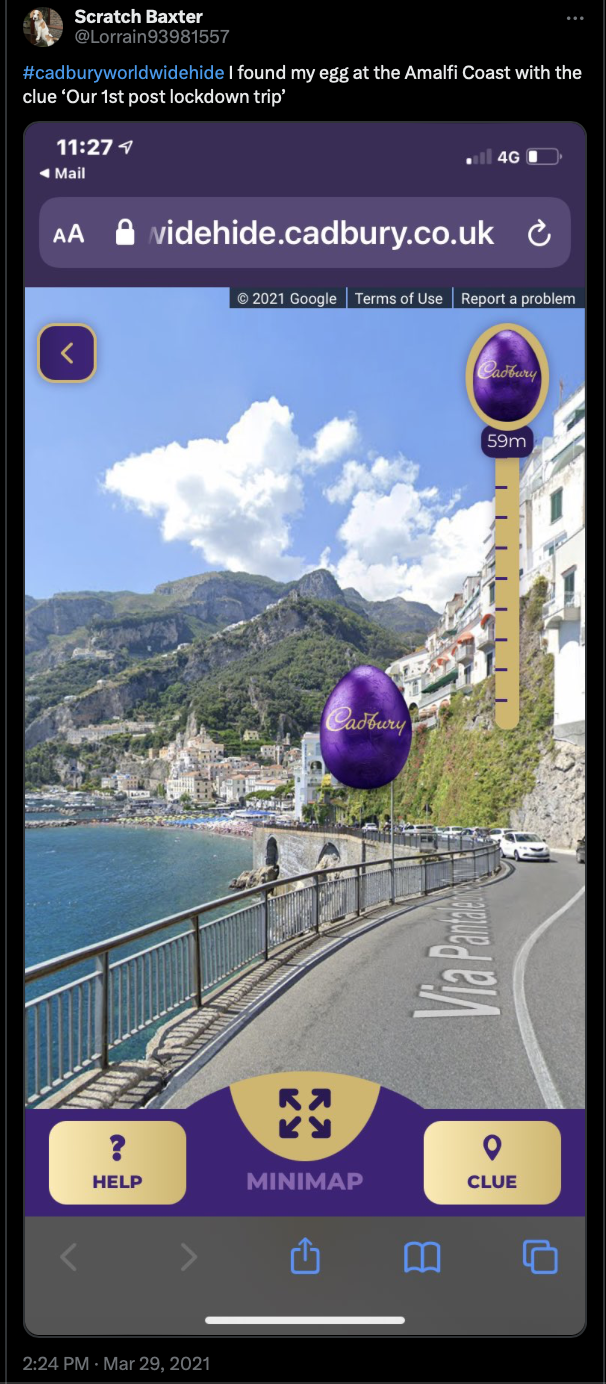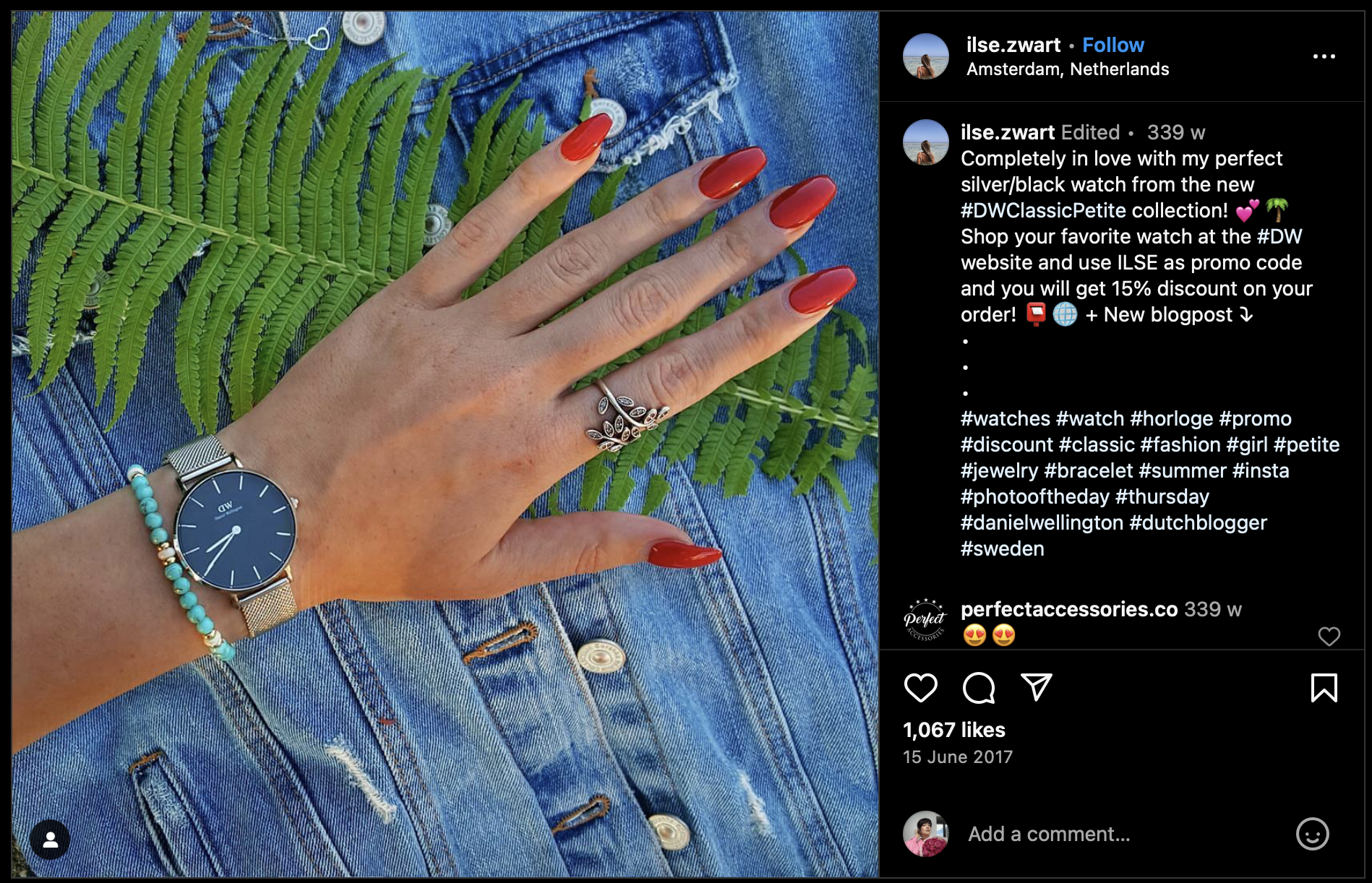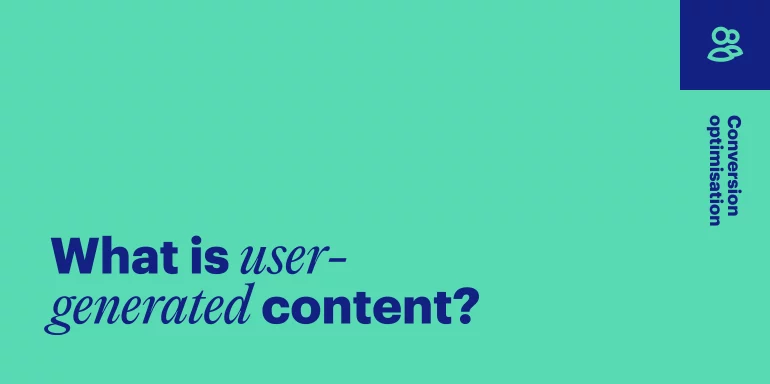What is user-generated content?
User-generated content (UGC) refers to original material used in campaigns, such as images, videos, reviews, and testimonials, created by actual product users instead of marketing teams. UGC harnesses real users’ POVs and experiences to engage and persuade prospects. Leveraging UGC builds brand awareness and fosters a vibrant community, attracting new customers through genuine endorsements of satisfied users.
As more intrusive marketing draws the ire of consumers. UGC is used by all the top brands, from Pepsico to Apple, Disney, and Warby Parker.
The value of the global UGC market in 2022 was $4.4 billion and is projected to grow at a CAGR of 29.4% from 2023 to 2030.
Why is user-generated content important?
Consumers are constantly bombarded with advertising and marketing messages from brands. With so many competing messages, consumers often disengage from ads and other marketing materialsb. But they do engage with each other. According to the State of Social & User-Generated Content 2023, consumers rank authentic UGC as the most trustworthy content.
UGC is essential for building trust, fostering engagement, enhancing authenticity, boosting conversion rates, cost-effective marketing, broadening reach, and leveraging social proof to influence potential customers positively. Incorporating UGC into marketing strategies can significantly contribute to a brand’s overall success and sustainability.
Enhanced trust and credibility
User-generated content enhances trust and credibility by providing authentic experiences from real users. Potential customers are more likely to trust the opinions of their peers over traditional advertising, making UGC a valuable tool in building a trustworthy brand image.
Increased brand engagement and loyalty
UGC fosters increased brand engagement and loyalty by encouraging active participation from customers. When users contribute content, they feel a sense of ownership and connection to the brand, leading to sustained loyalty and a thriving brand community.
McDonald’s “Raise Your Arches” campaign, launched in January 2023, cleverly capitalized on the iconic golden arches that symbolize the brand. The critical element of the campaign was having customers playfully raise their eyebrows, mirroring the shape of McDonald’s famous arches, without explicitly mentioning the brand.
This unique communication method gained significant traction, with over 1,000 Instagram posts and over 5 million TikTok views featuring customers “raising their arches” in solidarity with their love for McDonald’s. The campaign, spanning over 30 global markets, highlighted the universal appeal of the invitation to enjoy McDonald’s, conveyed without uttering a single word.

The social-first campaign celebrated this non-verbal invitation with a series of through-the-line ads and activations designed to encourage people to join in and raise their arches. Teasers featuring a simple graphic ”eyebrow raise” adaptation of the iconic McDonald’s logo were used on social channels and TV end frames, contributing to the campaign’s overall success and widespread engagement.
Amplified authenticity and relatability
The authenticity of UGC makes it relatable to a broader audience. Real stories, images, and videos shared by users create a genuine connection, making the brand more relatable and resonant with the diverse experiences of its customer base.
The company encouraged users to share their unique and memorable travel moments on social media platforms using the campaign hashtag. By showcasing real experiences from their community, Airbnb effectively built trust among potential travelers and inspired them to explore new destinations.
This UGC campaign boosted brand visibility and positioned Airbnb as a platform that goes beyond traditional accommodations to offer genuine cultural immersion.
Improved conversion rates and purchase intent
UGC positively influences conversion rates and purchase intent. Potential customers are more likely to purchase when they see others enjoying and endorsing a product or service. UGC acts as social proof, validating the value and quality of the offerings.
Cost-effective marketing tool
Utilizing UGC is a cost-effective marketing strategy. Instead of investing heavily in creating brand-generated content, businesses can leverage the creativity of their user base, reducing production costs while maintaining a steady flow of engaging material.
Broader reach and scalability
UGC enables brands to reach a broader audience and scale their marketing efforts. User-created content often gets shared across social media platforms, extending the brand’s reach beyond its immediate audience. This organic sharing increases visibility and brand awareness.
Social proof and influence
UGC serves as powerful social proof, influencing the perceptions and decisions of potential customers. Positive reviews, testimonials, and shared experiences create a persuasive narrative, convincing others to choose a product or service based on the positive experiences of their peers.
Types of User-Generated Content
User-generated content comes in various forms, reflecting how individuals engage with and contribute to a brand’s narrative. Whether through written reviews, social media updates, videos, images, or even creative artwork, users play a crucial role in shaping and amplifying a brand’s story.
Reviews and testimonials
Users share their opinions and experiences with a product or service through written reviews or testimonials. This type of user-generated content provides valuable insights for potential customers and builds credibility for the brand.
Social media posts
Users create content on various social media platforms, including updates, tweets, and posts that showcase their experiences with a brand. Social media is a dynamic space for user-generated content, fostering community engagement and brand advocacy.
Burger King’s “You Rule” campaign celebrates everyday royalty, placing the customer at the forefront of the brand’s focus. The campaign, launched in October, has modernized the tagline and draws inspiration from the classic “Have It Your Way” jingle from the 1970s. This new approach is reflected in various posts to maintain brand unity.
The campaign emphasizes that “You Rule” goes beyond traditional marketing efforts at Burger King. The brand aims to integrate this theme into every touchpoint of the guest experience, encouraging team members to spread the joy associated with the “You Rule” concept through in-person greetings or expressions of gratitude in the drive-thru.
The aspect of the campaign capturing the hearts and minds of social media users is the accompanying jingle, which has gone viral. Titled “You Rule,” the catchy tune is a reimagined version of Burger King’s original 1970s-era jingle “Have it Your Way“. Featuring a singer listing various Burger King menu items, it has become a certified earworm, permeating social media and even finding its way into NFL game commercial breaks.
Social media users are creating “Whopper Whopper” content, with some mashing up the jingle with popular songs, showcasing its infectious and widespread popularity. The campaign effectively combines a fresh take on a classic jingle with a broader theme of customer appreciation, making it a notable success for Burger King. Another TikToker, @neelsamba, was inspired to pair Dua Lipa’s hit “Levitating” with the jingle.

Videos and vlogs
Users produce videos or vlogs to share detailed experiences, unboxings, or tutorials related to a product or service. Video content is engaging and visually represents user satisfaction, making it a powerful form of user-generated content.
Images and photos
Users share images and photos capturing their interactions with a brand or its products. This visual content is often shared on social media platforms, adding a personal touch and authenticity to the brand’s image.
Creative content and artwork
Some users express their appreciation by creating original artwork or creative content inspired by a brand. This can include illustrations, graphics, or other artistic expressions that showcase the user’s talent and enthusiasm for the brand.
How to get user-generated content
Collectively, these strategies create an environment where users are motivated to generate content for your brand. Whether through contests, shareable experiences, branded campaigns, direct feedback, or success story showcases, actively involving your audience in creating content fosters a sense of community and enthusiasm around your brand. social listening tools and media monitoring is essential for gathering and collecting user generated content.
Heinz’s “#TipForHeinz” campaign encouraged the American public to voice their preference for Heinz ketchup by adding a ”$1 tip for Heinz ” to their restaurant bills if the establishment lacked its ketchup. Participants then submitted a picture of the receipt to www.tipforheinz.com or shared it on Instagram with the hashtags #TipForHeinz or #sweepstakes.
Heinz committed to reimbursing the $1 and restaurant tips (up to $20) and even covered the entire bill for some lucky customers, totaling $125,000 in tips throughout the campaign. Heinz also awarded a year’s supply of ketchup to the first 10 restaurants that switched during the campaign.
This lighthearted and social media-friendly campaign showcased Heinz’s skill in involving people and creating a positive incentive for engagement. By harnessing the opinions of diners, Heinz aimed to highlight its superiority over generic competitors.
The campaign’s clever tactic utilized social media and out-of-home activations to encourage consumers to tip for Heinz and potentially win gratuity reimbursement or have their bills paid in full.
The initiative aligned with Heinz’s playful approach in other campaigns, ultimately emphasizing the brand’s product value and justifying its higher cost than competitors.

Run engaging contests and challenges
Organize contests or challenges that encourage users to create and share content related to your brand — for instance, a photo contest where users share creative uses of your product. Offer enticing prizes to motivate participation and generate a buzz around your brand. Nearly 70% of marketers agree social contests and campaigns boost engagement and conversions.
Cadbury’s Worldwide Hide is a unique virtual Easter egg hunt that allows participants to hide digital eggs anywhere in the world using Google Maps and share them. The campaign promotes generosity and meaningful connections, particularly during Easter, one of Cadbury’s peak sales periods.
Participants can choose locations worldwide, from remote areas to bustling city streets, and mark their digital eggs on Google Maps. The launch involves a 20-second TV ad and digital billboard advertising in target cities, featuring virtual eggs hidden in real locations. The campaign aims to engage various customer interests through creative partnerships, including collaboration with the famous ”Instagram egg” for social media promotion.
Cadbury Worldwide Hide operates on a three-step process:
- Participants hide their digital Easter eggs on Google Maps using Street View
- They write a clue to help recipients find the hidden eggs and provide an email for notification
- The egg hunt begins for recipients, who, if the sender opted for the paid version, may receive a real Easter egg by mail
The virtual option is free, but participants can also purchase and send physical Easter eggs through the platform.
The campaign encourages user-generated content, with participants posting their found Easter eggs on social media platforms such as Instagram and X.


Create shareable experiences
Craft experiences that users naturally want to share. This could be through unique events, product launches, or interactive online experiences. For instance, hosting an exclusive event or providing early access to a new product can create excitement, prompting users to share their experiences.
Does any brand capitalize on its high engagement levels better than Doritos? We doubt it. Doritos consistently demonstrates it understands how to leverage social media, with fans eagerly awaiting its newest social media campaign.
In 2023, to promote the launch of a new flavor, “Sweet and Tangy BBQ,” it launched #DoritosTriangleTryout, which went viral on TikTok with over five billion views. Superfans were tasked with re-creating their show-stopping version of “the triangle-inspired dance” to the tune of the Doritos commercial song “Let’s Get It.”
Over 700 videos were uploaded to its Let’s Get It TikTok channel. And the winner got to star in Doritos’ 2023 Super Bowl ad!
Leverage branded hashtags and campaigns
Encourage users to use branded hashtags when sharing content related to your brand. This can help you easily track and collect user-generated content. For example, Starbucks’ #RedCupContest prompts users to share their festive Starbucks cup photos during the holiday season, creating a viral campaign.
Solicit direct user feedback
Actively seek feedback from your users. This can be through surveys, reviews, or direct requests for opinions on social media. By engaging users in conversations, you gather valuable insights and create opportunities for them to share their experiences organically.
Showcase user success stories
Highlight the success stories of your users. This could include before-and-after scenarios or personal achievements related to your product or service. Share these stories on your website, social media, or in marketing materials, showcasing real-world examples of how your brand positively impacts you.
How to integrate user-generated content into your marketing strategy
Integrating user-generated content into your marketing strategy involves building a community, leveraging social media campaigns, collaborating with influencers, featuring content on product pages, and systematically measuring performance. These approaches strengthen brand-consumer relationships and contribute to the overall success and authenticity of your marketing efforts.
Build a community around UGC
Establish a dedicated space for your community to contribute and engage with user-generated content. For example, GoPro has a community platform where users share action-packed photos and videos. This builds a sense of belonging and encourages continuous participation.
Create UGC-focused social media campaigns
Launch campaigns that specifically encourage users to generate content on social media platforms. With its annual #RedCupContest, Starbucks prompts users to share their creative photos with the iconic red holiday cup, turning customers into brand ambassadors and creating a festive social media buzz.
Collaborate with influencers and advocates
Partner with influencers or brand advocates who actively create and share user-generated content. Watchmaker Daniel Wellington has perfected this marketing strategy, actively using influencers and brand ambassadors to promote its brand from its earliest days.
Recognizing the competitive market and operating on a limited budget, founder Filip Tysander saw the potential of Instagram even in the early days of the platform in 2011.
Tysander’s strategy focuses on micro-influencers, individuals with around 5,000 followers in specific niches. Influencers are offered a free watch in exchange for posting about the brand. Daniel Wellington leveraged its own social media channels, including Instagram, to organize competitions under the hashtag #DWPickoftheDay. This encouraged influencers and regular users to share pictures of their Daniel Wellington watches, further enhancing the brand’s global awareness.

Daniel Wellington has sold over 6 million watches in 25 countries, with an impressive Instagram following of 4.8 million as of August 2022. The hashtag #danielwellington has garnered 166 million views on TikTok and over 2.4 million posts on Instagram. Notable figures like Hailey Bieber, Selena Gomez, and Lee Jong have been seen wearing Daniel Wellington watches.
Daniel Wellington utilized the content generated by influencers on their social media and even on the brand’s website as product images, showcasing the effectiveness of their influencer marketing approach.
Feature UGC on product pages
Integrate user-generated content on your product pages to provide social proof. For instance, fashion retailer ASOS displays user-generated photos of customers wearing their products on product pages. This showcases the products in real-life scenarios and helps potential buyers envision themselves in those items.
Measure and analyze UGC performance
Utilize analytics tools to measure the performance of user-generated content. Airbnb encourages hosts to include user-generated photos in their listings. By analyzing the impact of these visuals on booking rates and user engagement, Airbnb can refine its approach and continuously enhance the user experience.
Best Practices for UGC
Determine the goal of your UGC campaign
UGC’s effect on your business depends on what kind you plan to collect and how you’ll use it. If your goal is to boost brand awareness, a hashtag campaign like Loews Hotels’ #TravelForReal on Instagram can help create buzz about your product or service.
If your goal is to boost website conversions, a campaign that solicits customer reviews, like this one from Amazon, can help you earn the social proof you need to make the sale.
Create a system to collect UGC
T-Mobile received over 100,000 break-up letters by the end of its campaign. To use them effectively, the company needed a system to collect and organize it all.
Your collection method doesn’t have to be highly technical—many companies use a branded hashtag. However, collecting UGC on social media with a branded hashtag can be tricky since ownership rights over photos and posts can be harder to earn. By collecting user-generated content via an app or portal, companies ensure the content can be used in official advertising campaigns without legal issues.
Be clear about what you want and what you’re willing to offer
Some companies, like GoPro, are breeding grounds for UGC. This type of content is built into their product design.
But for most brands, earning user-generated content requires an offer in exchange. If you run a campaign to collect UGC, ensure the rules are clear to your audience and offer a reward proportional to the effort involved in creating the content.
Consult legal specialists
Running a UGC campaign can be complex from a legal standpoint. Rules surrounding giveaways may be complicated, depending on your location and medium of collection, as are your rights to any content generated by your users. You should consult legal specialists before using any UGC in your marketing.
Learn from negative UGC, but showcase the positive
UGC allows consumers a more authentic buying experience, but at the end of the day, you’re still a marketer. Content that criticizes your brand, product, or service may be shared with internal teams if they can learn from it and improve your product, service, or process, but not spread externally.
Monitor your submissions closely and pick only the best pieces of UCG to work into your company’s marketing campaigns.
Get started with user-generated content
Collecting valuable user-generated content takes more than coming up with a hashtag. Good UGC adds value to the brand. UGC can show people the capability of a particular product or service, spread awareness, and boost social proof during purchasing.
Always connect all your ads to personalized landing pages to lower your cost per customer acquisition. Start creating your dedicated landing pages. Sign up for a 14-day trial.

Try the world's most advanced landing page platform with a risk-free trial.
